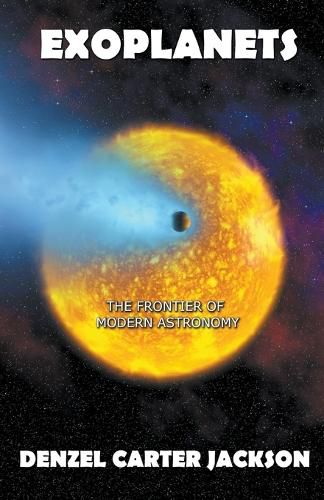Exoplanets, The Frontier of Modern Astronomy
Denzel Carter Jackson

Exoplanets, The Frontier of Modern Astronomy
Denzel Carter Jackson
This title is printed to order. This book may have been self-published. If so, we cannot guarantee the quality of the content. In the main most books will have gone through the editing process however some may not. We therefore suggest that you be aware of this before ordering this book. If in doubt check either the author or publisher’s details as we are unable to accept any returns unless they are faulty. Please contact us if you have any questions.
Exoplanets have been found in a relatively small region of our galaxy, the Milky Way. According to NASA’s Kepler Space Telescope, there are more planets in the universe than stars.
Our solar system’s exoplanets comprise similar elements to our planets, but their mixtures may differ. By measuring the sizes (diameters) and masses (weights) of exoplanets, we can determine their compositions, which range from very rocky (like Earth and Venus) to very gaseous (like Jupiter and Saturn). Some planets may be dominated by water, ice, or iron, while others are dominated by iron or carbon. A stellar world with lava seas, a puffy planet, and a planet whose core is as dense as Styrofoam have been identified.
Since then, we’ve discovered thousands of exoplanets using various detection methods. From Earth, it is infrequent to see an exoplanet through a telescope the way you might see Saturn. Direct imaging has only been used to find a handful of exoplanets (and these are usually young gas giants orbiting very far from their stars).
Exoplanets are now part of our universe. There are thousands of confirmed planets. This is only a tiny part of the entire galaxy. As we increase the number and observing power of robotic telescopes deployed in space, the number could rise into the tens of thousands within a decade.
Since then, we’ve discovered thousands of exoplanets using various detection methods. From Earth, it is infrequent to see an exoplanet through a telescope the way you might see Saturn. That’s called direct imaging, and only a handful of exoplanets have been found this way (and these are young gas giant planets orbiting very far from their stars).
Exoplanets are now part of our universe. Thousands of planets have been confirmed. This is only a tiny sampling of the galaxy. By deploying more robotic telescopes into space, we will see tens of thousands of stars within a decade.
This item is not currently in-stock. It can be ordered online and is expected to ship in 7-14 days
Our stock data is updated periodically, and availability may change throughout the day for in-demand items. Please call the relevant shop for the most current stock information. Prices are subject to change without notice.
Sign in or become a Readings Member to add this title to a wishlist.


